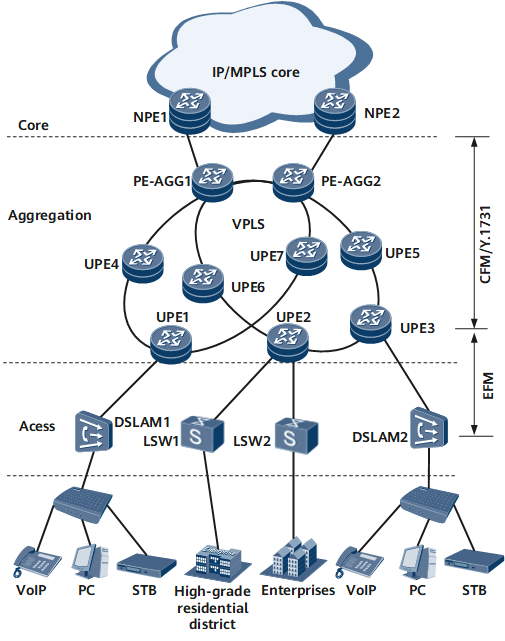Ethernet OAM Applications on a MAN
EFM, CFM, and Y.1731 can be combined to provide E2E Ethernet OAM solutions, implementing E2E Ethernet service management.
EFM is used to monitor P2P direct links between a digital subscriber line access multiplexer (DSLAM) and a user-end provider edge (UPE) or between a LAN switch (LSW) and a UPE. If EFM detects errored frames, codes, or frame seconds, it sends alarms to the network management system (NMS) to provide information for a network administrator. EFM uses the loopback function to assess link quality.
CFM is used to monitor E2E links between a UPE and an NPE or between a UPE and a provider edge-aggregation (PE-AGG). A network planning engineer groups the devices of each Internet service provider (ISP) into an MD and maps a type of service to an MA. A network maintenance engineer enables maintenance points to exchange CCMs to monitor network connectivity. After receiving an alarm on the NMS, a network administrator can enable loopback to locate faults or enable linktrace to discover paths.
Y.1731 is used to measure packet loss and the delay on E2E links between a UPE and an NPE or between a UPE and a PE-AGG at the aggregation layer.
